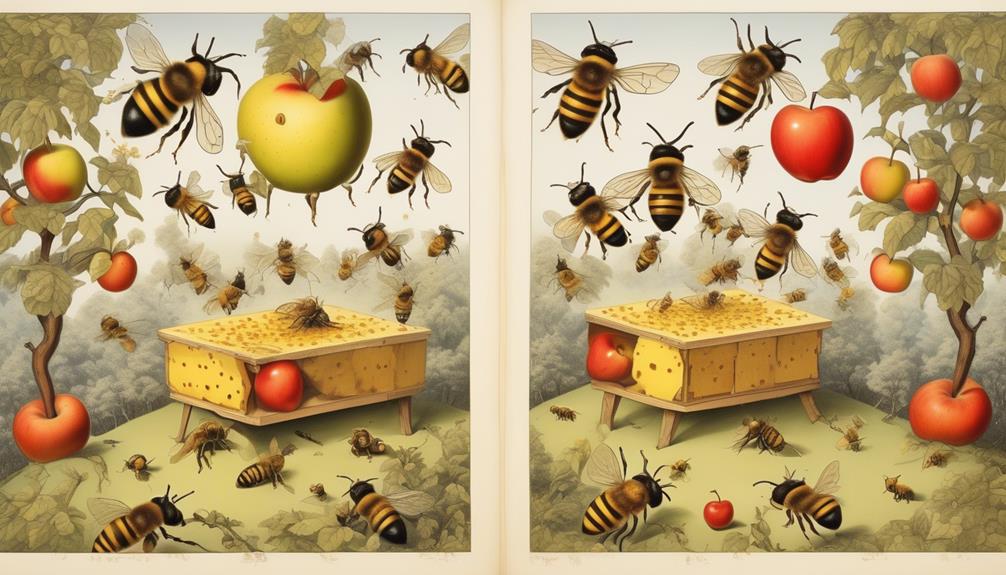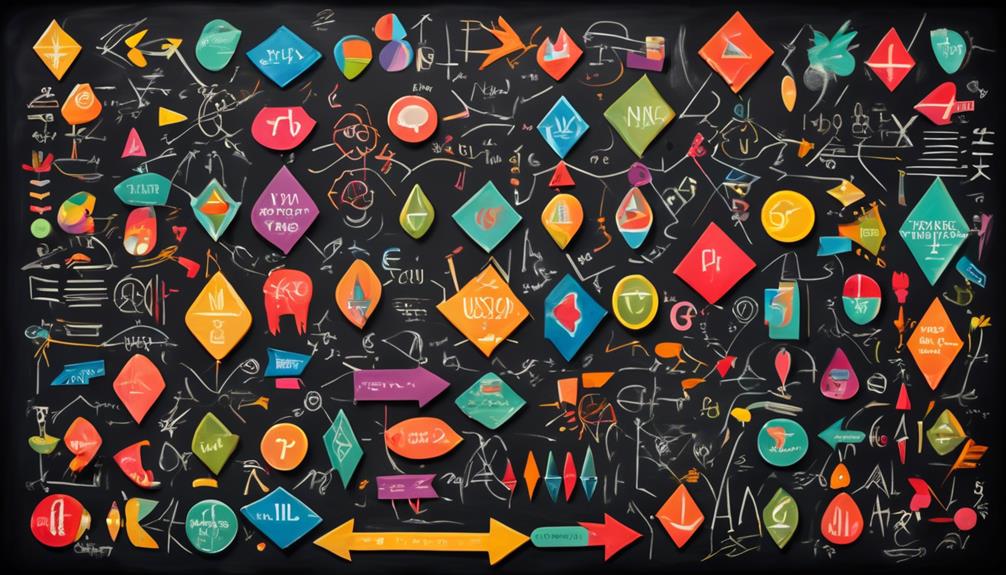Journey through the intriguing world of collective and plural nouns, unveiling the complexities that enrich English language comprehension.

Collective Noun Vs Plural Noun
Did you know that around 70% of English language learners find it challenging to differentiate between collective nouns and plural nouns?
You're about to embark on a journey that explores the fascinating world of these two types of nouns that often leave even native English speakers puzzled.
By understanding the intricacies that distinguish collective nouns from plural nouns, you'll discover how much they can enrich your language use and comprehension.
So why not stick around to uncover the secrets these nouns hold?
Key Takeaways
- Collective nouns refer to a group of individuals or things considered as one entity.
- Plural nouns denote more than one person, place, thing, or idea.
- Collective nouns emphasize the group's unity or collective action, while plural nouns simply indicate multiple entities.
- Understanding the distinction between collective and plural nouns helps in using the correct verb agreement.
Understanding Basic Noun Types

To fully grasp the difference between collective nouns and plural nouns, it's crucial to first understand the basic types of nouns in the English language. Nouns, in essence, are the labels we use to identify people, places, things, or ideas. They're the backbone of every sentence, providing the subject matter for verbs to act upon.
Firstly, common nouns denote general items or people, such as 'city' or 'teacher'. On the contrary, proper nouns represent specific entities, like 'London' or 'Mr. Smith'. Then there are abstract nouns that express concepts, feelings, or ideas, like 'love' or 'justice'.
Next, you encounter concrete nouns, which refer to physical entities that you can perceive with your senses. 'Apple', for example, is a concrete noun because you can touch, taste, and see it. In contrast, countable nouns refer to items that are quantifiable, like 'book' or 'pen', while uncountable nouns such as 'water' or 'advice' can't be counted.
Understanding these basic noun types will serve as a foundation for your comprehension of collective and plural nouns. Remember, clarity in grammar opens doors to effective communication.
Breaking Down Collective Nouns

Having established a basic understanding of different noun types, let's now focus our attention on collective nouns, an integral aspect of English grammar that often perplexes learners.
A collective noun, by definition, refers to a group of individuals or things considered as one entity. Examples of collective nouns include words such as 'team,' 'family,' 'flock,' or 'class.'
At first glance, you might mistake collective nouns for singular nouns due to their reference to one unit. However, it's crucial to understand that they encapsulate a multitude of individuals within that unit. This duality can lead to confusion when determining verb agreement.
Should you use a singular or plural verb with a collective noun? The answer is context-dependent. If the collective noun operates as a single unit, use a singular verb. For example, 'The team is winning.' Here, the team acts collectively. Conversely, if the individuals within the group are acting separately, use a plural verb. For instance, 'The team are arguing among themselves.'
The Function of Plural Nouns

Just as you've grappled with the concept of collective nouns, it's equally important to understand the function of plural nouns in English grammar. Plural nouns, unlike their singular counterparts, denote more than one person, place, thing, or idea. They're a fundamental grammatical component, allowing for clear communication about quantity.
You form most plural nouns by appending an 's' or 'es' to the singular form. But remember, English is notorious for its exceptions. Some nouns undergo irregular transformations, such as 'child' to 'children' or 'mouse' to 'mice'.
Plural nouns also play a critical role in subject-verb agreement. If the subject of your sentence is a plural noun, the verb must correspondingly be plural. For example, you'd say, 'The dogs bark,' not 'The dogs barks.'
Moreover, plural nouns affect pronoun usage. When referring back to a plural noun, you'll use plural pronouns like 'they' or 'them'. For instance, 'The dogs chased their tails,' not 'The dog chased their tail.'
Comparative Study: Collective Vs Plural Nouns

In analyzing the distinction between collective and plural nouns, you'll find that these linguistic elements serve different purposes, notwithstanding their shared role in indicating quantity.
Collective nouns refer to a group or collection as a single entity, like 'team' or 'family,' while plural nouns denote more than one individual object or person, such as 'apples' or 'children.'
Delving deeper, you'll observe that a collective noun's singularity is semantic, not numerical. It emphasizes the group's unity or collective action. For example, when saying 'the team is practicing,' the focus is on the team as a unit.
Contrasting this, plural nouns simply indicate multiple entities, with no implications of unity or collective action. When you say 'the children are playing,' you're referring to several individuals, each doing their own thing.
However, it's noteworthy that both types can be subject to verb agreement nuances. A collective noun can take a plural verb if the group's members are considered individually, like 'the team are disagreeing on the strategy.'
Practical Examples and Usage Tips

To better grasp the distinction between collective and plural nouns, let's now explore practical examples and usage tips.
Consider the word 'team'. This is a collective noun because it refers to a group of individuals acting as a unit. You'd say, 'The team is winning,' not 'The team are winning.' Here, 'team' functions as a single entity, hence the singular verb 'is'.
On the other hand, consider 'players'. This is a plural noun and refers to more than one individual. You'd say, 'The players are scoring,' not 'The players is scoring.' The term 'players' refers to multiple individuals, hence the plural verb 'are'.
Yet, it's crucial to note that British English often treats collective nouns as plural, while American English usually treats them as singular. For example, in British English, you might hear, 'The team are playing well,' while in American English, it would be, 'The team is playing well.'
Frequently Asked Questions
What Are the Origins of Collective Nouns and Plural Nouns in the English Language?
You're asking about the origins of collective and plural nouns in English. Collective nouns originated from Old English, influenced by Latin and French. They're used to refer to a group as a single entity.
Plural nouns, on the other hand, stem from various linguistic roots and simply indicate more than one of something.
It's fascinating how language evolves, isn't it?
Are There Any Exceptions to the Rules of Using Collective Nouns and Plural Nouns?
Yes, you'll find exceptions in English language rules, including those for collective and plural nouns.
For instance, a collective noun can take a singular or plural verb based on whether it's referring to a group as a single entity or individuals within it.
Similarly, some plural nouns ending in 's' don't follow the usual rule of adding 'es'.
How Are Collective and Plural Nouns Used in Other Languages?
In other languages, you'll often see differences in how collective and plural nouns are used. For instance, in French, collective nouns usually take singular verbs, while plural nouns take plural verbs. But it's not that simple. Language rules can vary and exceptions are common.
It's crucial to study and understand the grammatical nuances of the language you're learning. So, keep practicing and don't let these complexities deter you from mastering a new language.
How to Teach the Difference Between Collective Nouns and Plural Nouns to Kids?
To teach kids the difference, you'd start by explaining that a plural noun refers to more than one of something, like 'dogs'.
Then introduce collective nouns, which refers to a group or collection of similar things or people as one entity, like 'pack'.
Use examples and fun activities to reinforce the learning. It's important to make the lesson engaging and relatable, using things they're familiar with.
Practice and repetition will help solidify the difference.
Can a Word Be Both a Collective Noun and a Plural Noun?
Yes, a word can be both a collective noun and a plural noun.
For instance, 'family' is a collective noun because it refers to a group as a single unit. However, when you're talking about more than one family, you can say 'families,' making it a plural noun.
It's essential to understand the context in which the word is used to determine whether it's acting as a collective or plural noun.
Conclusion
In sum, while collective nouns denote groups and plural nouns represent more than one entity, their usage can be interchangeable at times. Understanding the nuanced difference between them helps you articulate thoughts more accurately.
Remember, context is key; collective nouns may take singular or plural verbs depending on their meaning in a sentence. So, get out there, practice, and experiment with your newfound knowledge about collective and plural nouns.
You'll soon master this vital aspect of English grammar.





Sign up